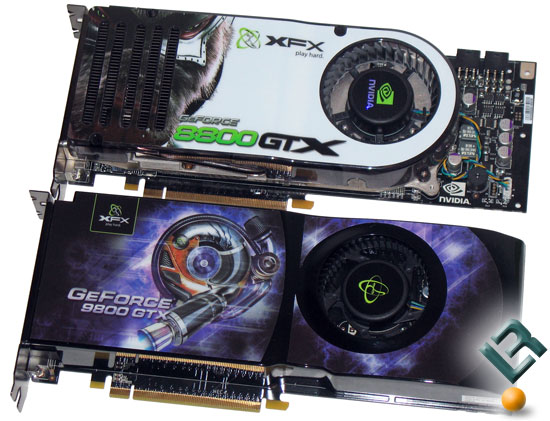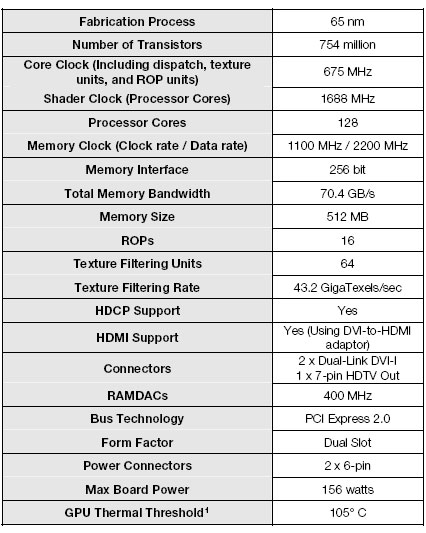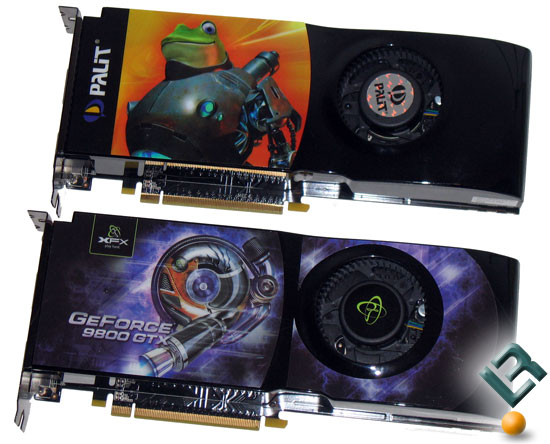XFX and Palit GeForce 9800 GTX Video Cards
NVIDIA Introduces The GeForce 9800 GTX
Video cards are launching left and right these days and its been a confusing time for many consumers. Trying to tell people that many of the latest GeForce 8 series cards have the same core as the GeForce 9 series isnt an easy thing to do. To complicate things even more, NVIDIA has been reducing the frame buffer size on the latest video cards. This is not only confusing to consumers, but the media as well. Today is no different, so sit back and we will try to walk you through what is going on.

The video card that is being launched today is the GeForce 9800 GTX, which has 754 million transistors that are manufactured on the 65nm process. This will be the direct replacement of the GeForce 8800 GTX, which has been the high-end work horse for NVIIDA since 2006. The GeForce 9800 GTX sounds like it isnt too much of an upgrade over the GeForce 8800 GTX, but NVIDIA claims that this GPU is this is the most complex GPU ever created and the specifications can be seen below. The GeForce 8800 GTX has a 768MB frame buffer with a 384-bit bus and the just released GeForce 9800 GTX just a 512MB frame buffer on a 256-bit bus. On paper this doesnt seem to be an improvement, but NVIDIA says they have optimized the G92 core so much that it doesnt need a larger frame buffer. NVIDIA atually said that internal lab testing has showed that a larger frame buffer doesn’t significantly improve performance.

The reference design features 128 processors cores operating at 1688 MHz, which produces an astounding 432 GigaFLOPs of processing power. Each processor core is capable of being dynamically allocated to vertex, pixel, and geometry operations for the utmost efficiency in GPU resource allocation, and maximum flexibility in load balancing shader programs. Working alongside the processors cores are 64 texturing processors (eight texture processors per shader block) each capable of one addressing and filtering operation per clock. With a peak bilinear fillrate of 43.2 gigatexels, it offers unprecedented texturing performance for any GPU. The chip features sixteen render back-end units (ROP) with full support for 128-bit high-dynamic-range rendering and NVIDIAs exclusive 16x Coverage Sampling Antialiasing (CSAA) algorithm. The ROP compression system has also been enhanced to improve performance at extreme resolutions such as 2560 x 1600. The enhanced compression will help keep memory usage in check and help performance in high resolution, antialiased scenarios.

Both Palit and XFX sent us graphics cards, but NVIDIA forgot to mail out a third card for triple SLI testing. They overnight mailed us a card that should arrive today, so for now let’s take a look at just these two cards.

Comments are closed.